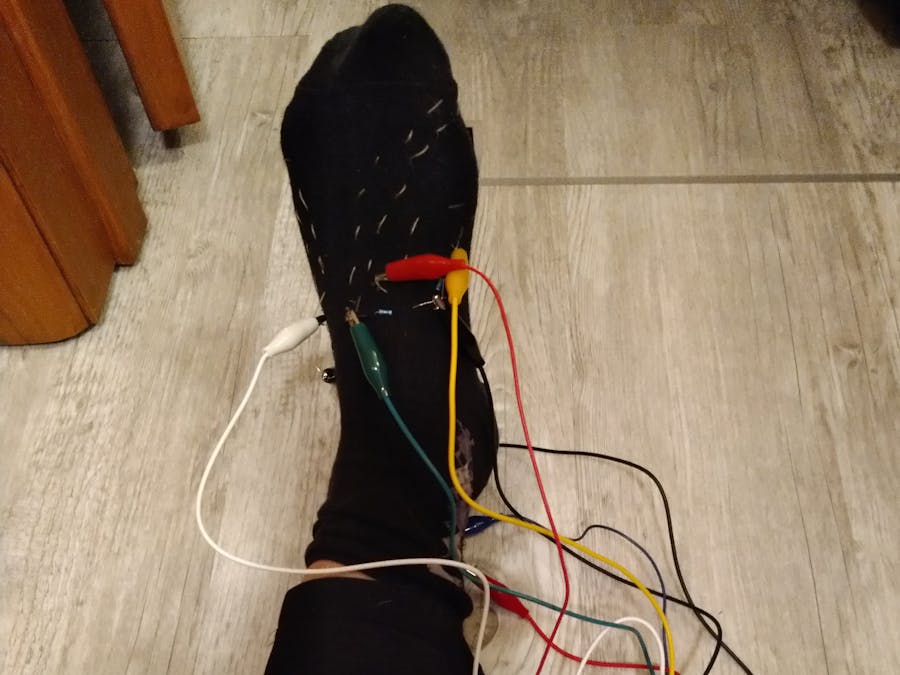Mobility is one of the most important factors in quality of life but forms of walking impairment are unfortunately common. Research has indicated that 10% of people between the ages of 60-69 suffer from some form of neurological or non-neurological gait disorder (Pirker & Katzenschlager, 2016). This number increases to 60% amongst people over the age of 80 (Pirker & Katzenschlager, 2016). Other ailments, such as ankle sprains, are common throughout the population. Studies have also suggested that roughly two million acute ankle sprains occur per year amongst the general population of the United States alone (Herzog, Kerr, Marshall, & Wikstrom, 2019). This figure, however, is likely a severe underestimation. It was determined based on the number of emergency room visits (Herzog, Kerr, Marshall, & Wikstrom, 2019). It does not account for the many individuals who do not go to the hospital or seek any medical attention after being injured. Early diagnosis is crucial in order to improve patient outcomes. The goal of this project was to develop a proof of concept device that measures a baseline walking pattern and a website that provides a visualization of the walking pattern. The device connects to a unique profile and displays the user's data. The end goal was for the device to differentiate between normal and abnormal gait patterns.
Biomechanics research has identified two distinct phases in the gait cycle: stance phase and swing phase. Stance phase consists of the period of time during which the foot is in contact of the ground. It can be further divided into five subphases that are categorized by the amount of contact between the foot and ground as well as the pressure distribution across the foot. Swing phase occurs as the foot swings forward through the air toward the next step. The gait cycle is summarized in Figure 1.
Due to the nature of stance phase, it is possible to use an array of pressure sensors placed at the bottom of the foot to record weight distribution throughout the foot during the gait cycle.
A simple and flexible pressure sensor can be constructed from a single sided adhesive, a conductive material, conductive thread, and Velostat. The components are layered as shown in Figure 2. In this case, aluminum foil was used for the conductive material but it would also be possible to use something like copper tape. The conductivity of Velostat changes in relation to the amount of pressure that is applied to it. The more pressure that is exerted on it, the more current that can pass through it. Conductive thread can be attached to both of layers of the conductive material as shown in Figure 2 to allow current to flow through the sensor. One piece of conductive thread connects to a power input while the other connects to a voltage divider circuit. This allows a microcontroller to receive information about the amount of current passing through the sensor as an analog input and then convert it to a digital value. This function is achieved using the included Arduino code.
Four of these pressure sensors were constructed in varying sizes. They were then attached to a sock at the heel and ball of the foot, as well as at the big and pinky toes. These locations were chosen due to the fact that these parts of the foot play important roles in walking and maintaining balance. They tend to experience the most significant forces during the gait cycle.
Data was recorded for thirty step intervals for one individual. After plotting the data in Excel, it was clear that the measurements from the sensors followed clear cyclical patterns that are consistent with expectations based on the gait cycle.
The AVR-IoT development board would be used to convey this data to Amazon Web Services (AWS) which was used to host the website. The data is then processed and used to create visualizations of the walking cycle. As shown in Figure 6, the different spots on the foot appear as different colors depending on the level of force that they are experiencing. In the future, the data would also be processed to determine whether a person has a normal or abnormal gait. In the case of an abnormal gait, it would be able to suggest potential conditions and communicate the data to a healthcare provider.
References:
- Pirker, W., & Katzenschlager, R. (2016, October 16). Gait disorders in adults and the elderly : A clinical guide. Retrieved January 31, 2021, from https://www.ncbi.nlm.nih.gov/pmc/articles/PMC5318488/#:~:text=The%20prevalence%20of%20gait%20disorders, subjects%20aged%20over%2080%20years.
- Herzog, M., Kerr, Z., Marshall, S., & Wikstrom, E. (2019, June 01). Epidemiology of Ankle Sprains and Chronic Ankle Instability. Retrieved January 31, 2021, from https://meridian.allenpress.com/jat/article/54/6/603/420863/Epidemiology-of-Ankle-Sprains-and-Chronic-Ankle












_gKoW55Hp00.png?auto=compress%2Cformat&w=48&h=48&fit=fill&bg=ffffff)








Comments
Please log in or sign up to comment.